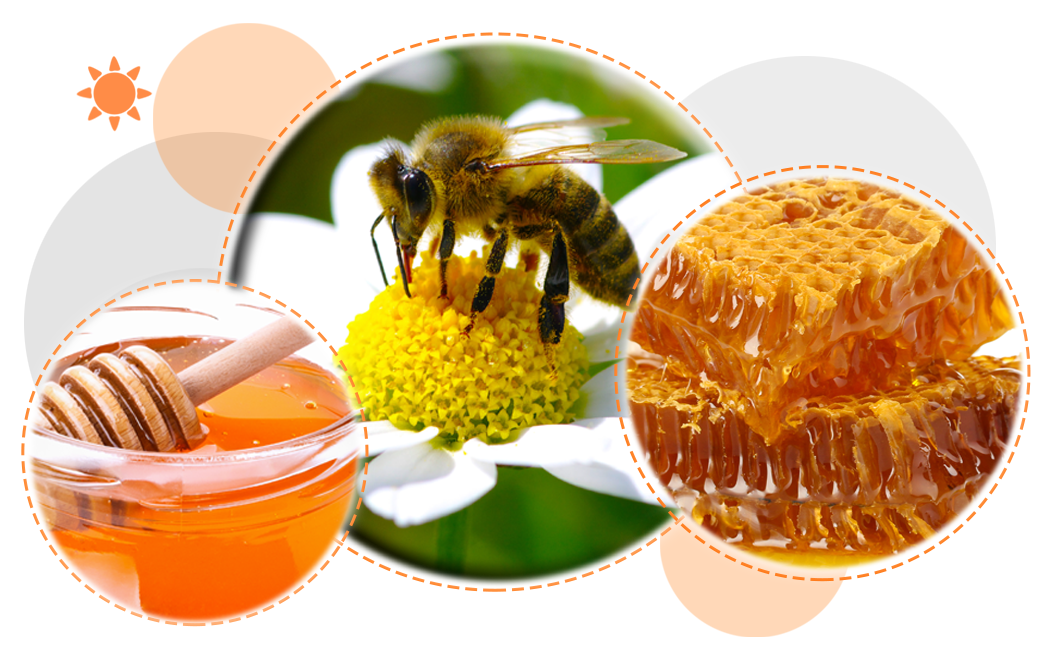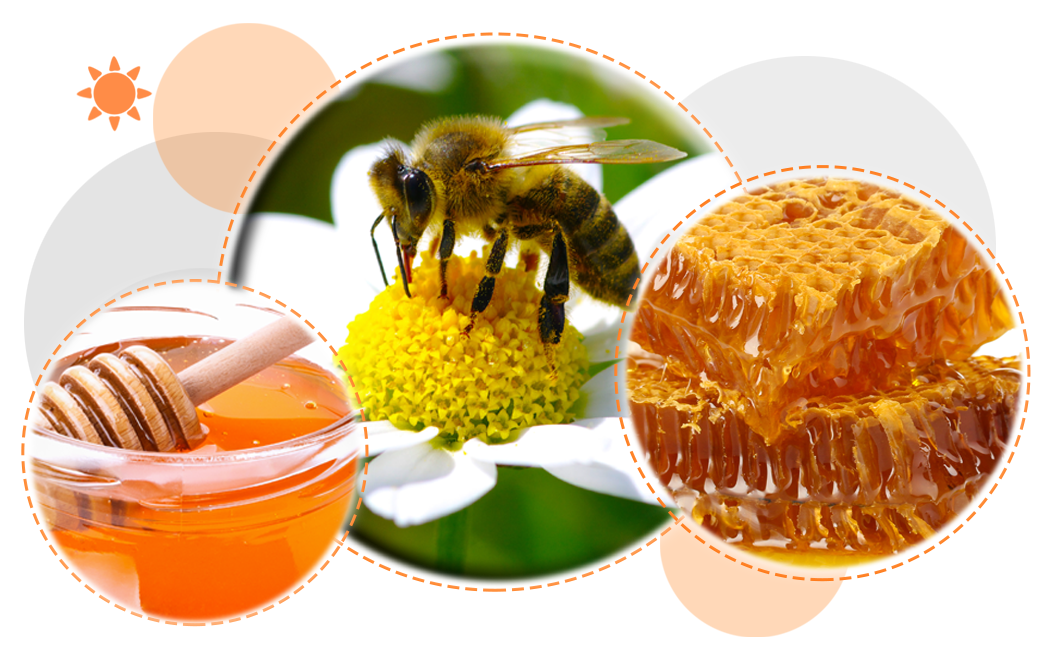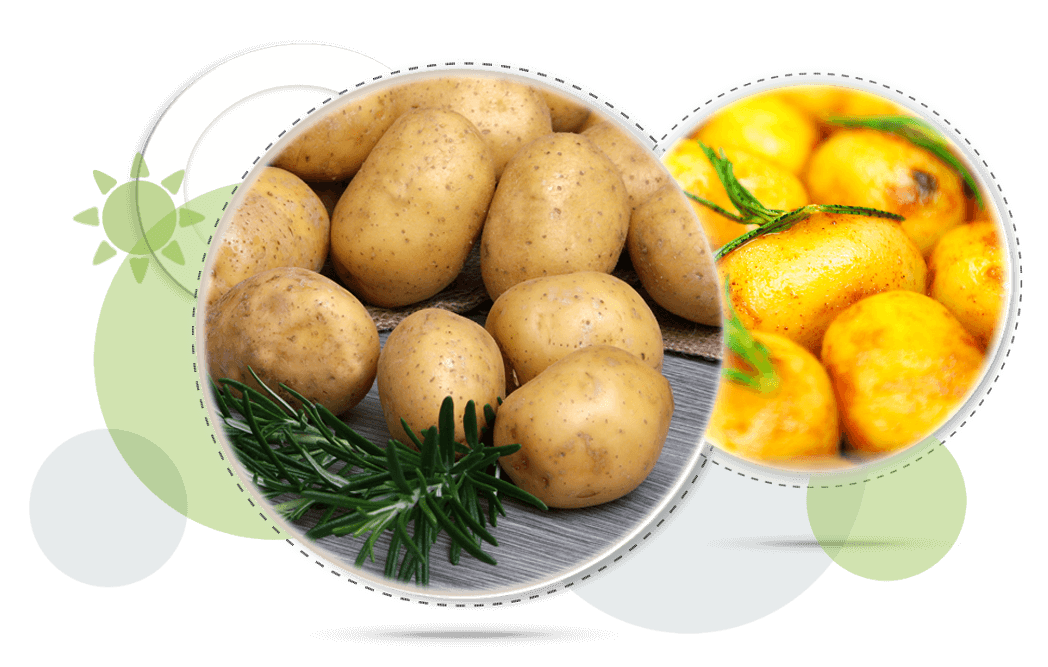Honey: From the Bee to the Jar!
Honey is a natural ingredient used for its sweetness, energy and potential health benefits. There are hundreds of different honey types such as clover, acacia or manuka, depending on the botanical origin. This article explores how honey is made, describes its composition, and discusses research on its reported health effects.

Introduction
The journey from bee to bottle begins with flower nectar. Honeybees collect the nectar and enzymes in bee saliva break down the sugar sucrose into glucose and fructose which is stored in honeycombs to feed the hive over the winter. In the honeycomb, excess water evaporates through constant fanning from the bee’s wings. The resulting thick, sticky liquid is what we know as honey (see Table 1 for composition).1
The European Union is the world’s second largest honey producer. The largest yields are found in Spain, Denmark, Romania and Hungary.2 However, as successful honey production depends on the honey bee thriving, it is of concern that Europe is seeing a significant decline in bee colonies (16% decrease between 1985 and 2005).3
Honeybees not only produce honey, but undertake an important role as crop pollinators. Given that 84% of the EU’s crops depend on pollination, the European Commission developed a strategy for honeybee health.4 Multiple factors contribute to the decline in bees; one of which may be pesticides, which prompted the European Food Safety Authority (EFSA) to issue guidance on assessing the potential risks of pesticides to bees.5
Composition
Season, environmental conditions, processing techniques and varieties of flower nectar can all influence the composition of honey but, essentially, the main nutritional constituents are carbohydrates (simple sugars: fructose and glucose). In addition to water, honey contains very small amounts of protein, vitamins, minerals, trace elements, enzymes and polyphenols, including flavonoids from pollen, which can help identify the honey origin.6
Table 1. Nutritional composition of honey*7
| Per 100 g | Per 20 g serving | |
|---|---|---|
| Energy | 288 kcal | 58 kcal |
| Fat (g) | 0 | 0 |
| Carbohydrate (g) | 76,4 | 15,3 |
| - fructose (g) | 41,8 | 8,4 |
| - glucose (g) | 34,6 | 6,9 |
| Protein (g) | 0,4 | 0,08 |
| Other constituents | ||
| Water (g) | 17,5 | 3,5 |
*based on analysis of 8 samples of assorted types.
Honey is typically a smooth liquid containing imperceptible tiny crystals. However, factors such as its origin, low storage temperature, longer storage time and higher glucose content, can all lead to crystallisation; larger crystals form and the texture becomes crunchy. The process can be momentarily reversed by gentle heating. However heating and filtering of honey (to purify) may negatively affect its properties by for example darkening the colour, destroying enzymes, and removing flavonoids.
Honey & health
Honey has been used for millennia in traditional medicine for its potential antibacterial, anti-inflammatory and antioxidant properties. Medical-grade honey is used topically for wound dressings. Honey’s low moisture content, hydrogen peroxide, and acidity (average pH of 3.9) are inhospitable to bacteria and give honey its antibacterial properties.6 However, honey may contain spores of Clostridium botulinum, which can cause serious infection in infants, leading to advice to avoid giving honey to children below 12 months of age.8 The anti-inflammatory properties are thought to be due to antioxidant substances, including chrysin (a type of flavonoid), vitamin C and catalase (an enzyme).9 The qualities of honey likely depend on honey origin, composition and dose.6
Honey has a glycaemic index (GI) of around 55, and sits on the cusp between low and moderate GI foods, which leads to a lower blood glucose rise than high GI foods. A low GI diet may be beneficial in metabolic conditions, such as type 2 diabetes.12,13 The blood glucose response is influenced by dietary fibre, fat and protein (which lower GI), the cooking and processing methods used, and the total amount of carbohydrate eaten.
Emerging evidence that honey may influence gut hormone levels and promote satiety needs to be confirmed by larger clinical trials but could indicate a role for honey in weight management.9,10 Research also suggests that eating honey daily can have beneficial effects on blood lipids, without increasing body weight, compared to equivalent amounts of sucrose. However this study only looked at 70 g honey per day, which is the equivalent to 3.5 servings (~200 kcal).11 Many other studies of the health properties of honey are also based on relatively high intakes.6 Increasing dietary intake from any energy source above energy needs will eventually lead to weight gain, unless balanced by increasing physical activity.
While honey appears to offer certain health benefits, there is a need for further human research data.
References:
1. National Honey Board (2014). How honey is made.
2. European Commission (2011) Honey.
3. Potts SG, Roberts SPM, Dean R, et al. (2010). Declines of managed honey bees and beekeepers in Europe. Journal of Apicultural Research 49 (1):15-22.
4. European Commission (2010). Website, Bee Health section: http://www.efsa.europa.eu/en/topics/topic/beehealth.
5. European Food Safety Authority (EFSA) (2013). Guidance on the risk assessment of plant protection products on bees (Apis mellifera, bombus spp. and solitary bees). Parma, Italy: EFSA.
6. Bogdanov S, et al. (2008). Honey for nutrition and health: a review. Journal of the American College of Nutrition 27:677-689.
7. McCance RA & Widdowson EM (2010). The composition of foods (pp. 334-335) 6th Ed. Cambridge, England: Food Standards Agency.
8. Scientific committee on veterinary measures relating to public health (2002). Opinion of the scientific committee on veterinary measures relating to public health on honey and microbiological hazards. Brussels: European Commission.
9. Ruxton C (2013). Honey: Natural, healthier sweetness. Network Health Dietitian 81:25-26.
10. Larson-Meyer DE, et al. (2010). Effect of honey versus sucrose on appetite, appetite-regulating hormones, and postmeal thermogenesis. Journal of the American College of Nutrition 29:482-93.
11. Yaghoobi N, et al. (2008). Natural honey and cardiovascular risk factors; effects on blood glucose, cholesterol, triacylglycerole, CrP and body weight compared with sucrose. Scientific World Journal 20:463-9.
12. Brand-Miller J, et al. (2009). Dietary Glycemic Index: Health Implications. Journal of the American College of Nutrition 28:446S-449S.
13. Schwingshack L & Hoffman G (2013). Long-term effects of low glycemic index/load vs. high glycemic index/load diets on parameters of obesity and obesity-associated risks: A systematic review and meta-analysis. Nutrition, Metabolism and Cardiovascular Health 23(8):699-706.



